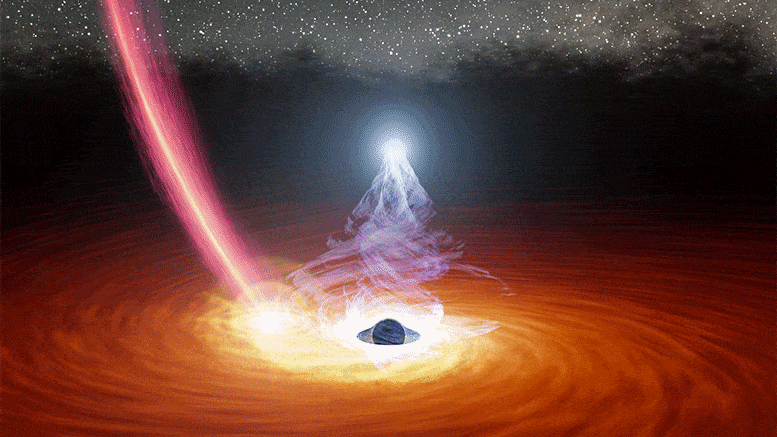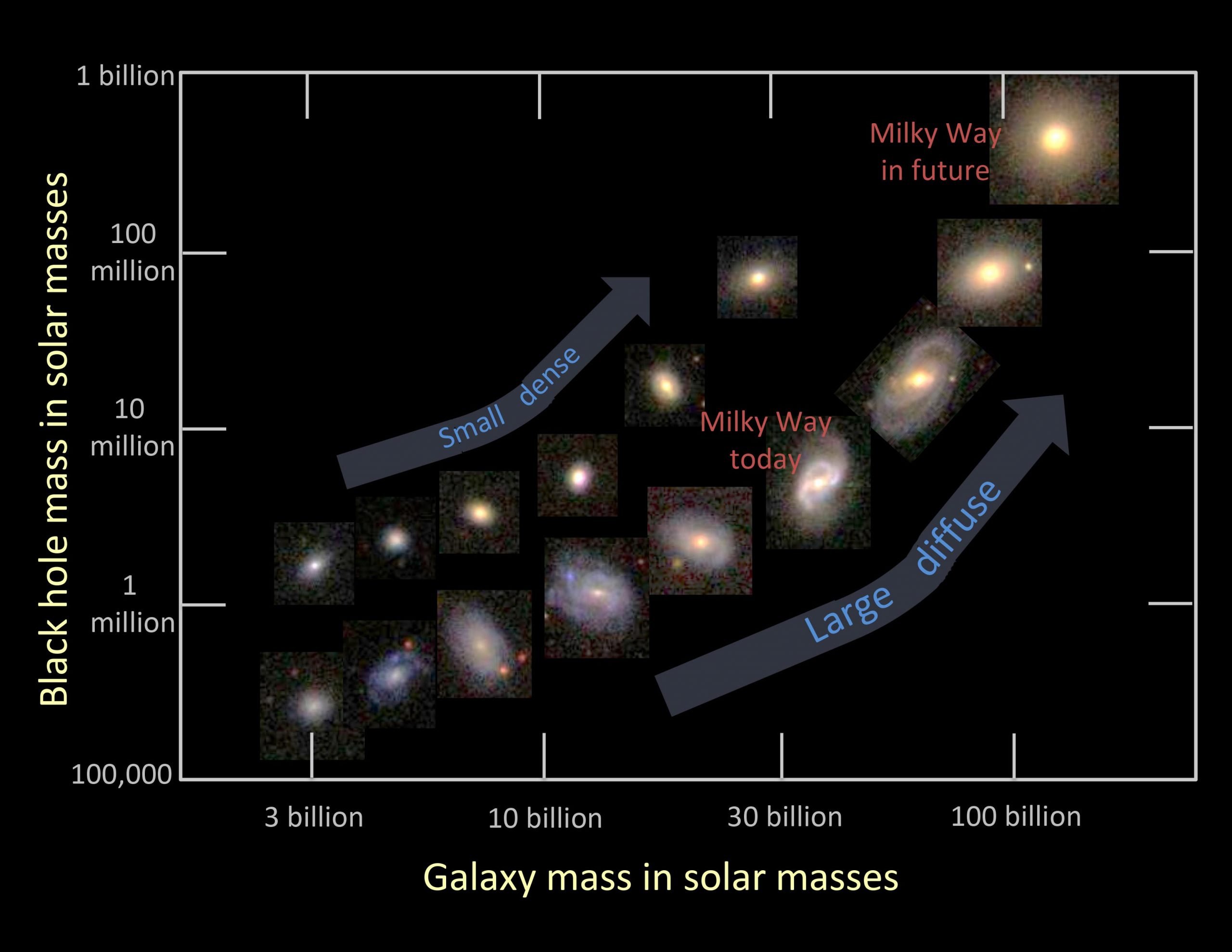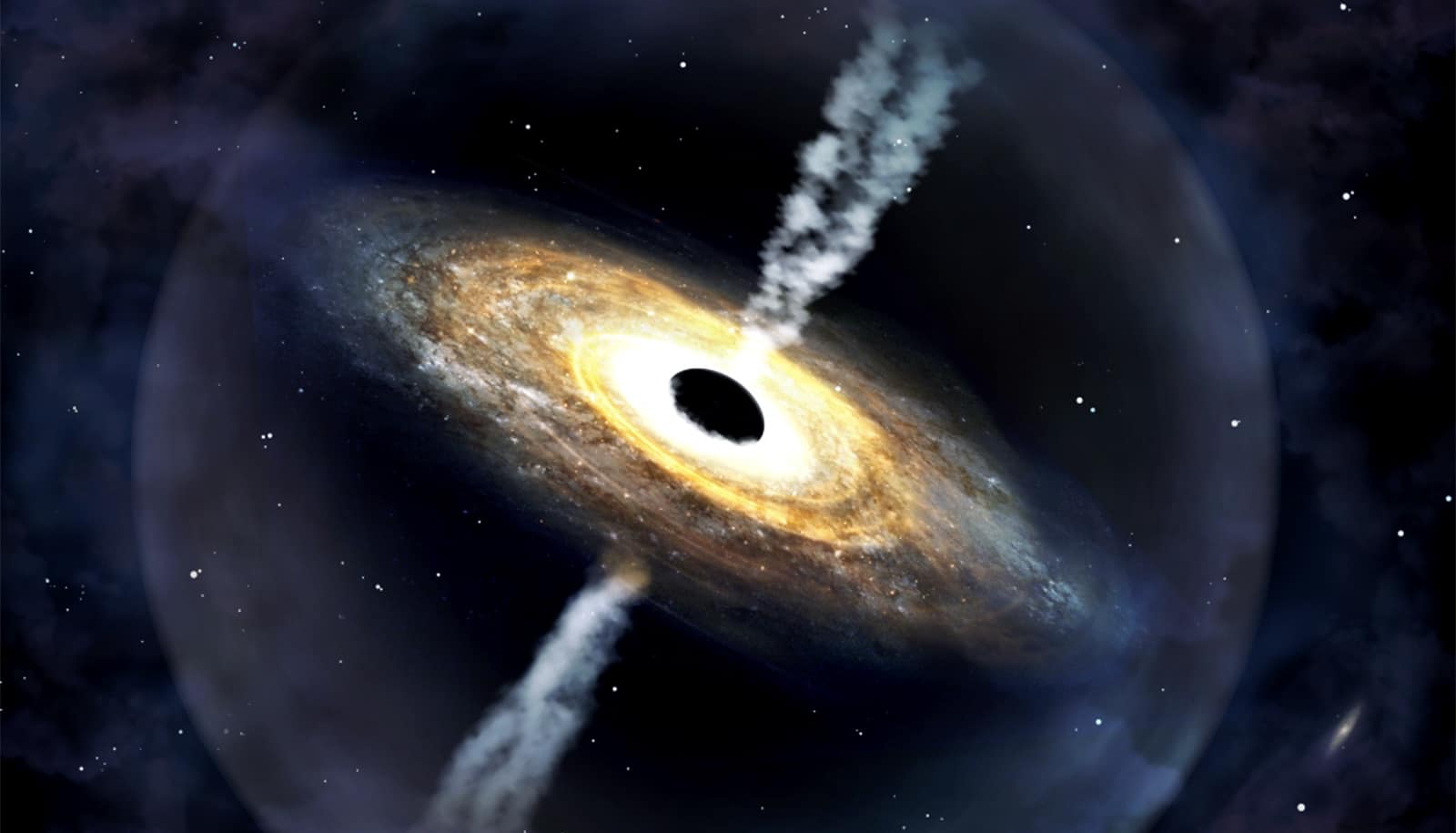
When two black holes spiral around each other and ultimately collide, they send out gravitational waves - ripples in space and time that can be detected with extremely sensitive instruments on Earth. Since black holes and black hole mergers are completely dark, these events are invisible to telescopes and other light-detecting instruments used by astronomers.
Now, scientists using Caltech's Zwicky Transient Facility (ZTF) located at Palomar Observatory near San Diego may have spotted what could be just such a scenario. If confirmed, it would be the first known light flare from a pair of colliding black holes.
Other things to check out:
In a first, astronomers watch a black hole's corona disappear, then reappear | MIT News
Astronomers at MIT and elsewhere watched a black hole's corona disappear, then reappear, for first time. A colliding star may have triggered the drastic transformation.
* * *
It seems the universe has an odd sense of humor. While a crown-encrusted virus has run roughshod over the world, another entirely different corona about 100 million light years from Earth has mysteriously disappeared.
For the first time, astronomers at MIT and elsewhere have watched as a supermassive black hole's own corona, the ultrabright, billion-degree ring of high-energy particles that encircles a black hole's event horizon, was abruptly destroyed.
Planet Nine could be a grapefruit-sized black hole - BBC Science Focus Magazine

Astrophysicists have suggested that the hypothetical Planet Nine could be a tiny black hole , and they've proposed a way to find out.
Planet Nine has never been seen directly. But the existence of a ninth planet orbiting our Sun could explain certain features of the outer Solar System , such as the clustering together of icy rocks called 'trans-Neptunian objects' with similarly tilted orbits.
Last year, scientists in the UK and US suggested that Planet Nine, which is also known as Nibiru , could instead be a primordial black hole. These as-yet-unseen black holes are thought to have formed a fraction of a second after the Big Bang . If Planet Nine was such an entity, it would be about the size of a grapefruit, with a mass of five to ten times that of Earth.
Runaway Star Might Explain Mysterious Black Hole Disappearing Act

The two illustrations on this page show a black hole surrounded by a disk of gas, before (above) and after (below) the disk is partially dispersed. In this top image, the ball of white light above the black hole is the black hole corona, a collection of ultra-hot gas particles that forms as gas from the disk falls into the black hole. The streak of debris falling toward the disk is what remains of a star that was torn apart by the black hole’s gravity. Credit: NASA/JPL Caltech
And here's another article:
Physics - A High-Energy Take on Black Hole Encounters

Gravitational-wave astronomy sounds like science fiction: two massive black holes swirl toward each other at a substantial fraction of the speed of light, radiating a burst of energy that outweighs the Sun in the form of gravitational waves. Millions of light years away, on Earth, we observe these ripples in the geometry of spacetime through the tiny deformations they produce in kilometers-long arms of laser interferometers [ 1 ].
The detection of gravitational waves—as well as the extraction of source information (such as mass, spin, and location) and the testing of fundamental physics—relies heavily on accurate theoretical models used as templates in the data analysis.
How Galaxies Die: New Insights Into Galaxy Halos, Black Holes, and Quenching of Star Formation

A new theory explains how black holes grow as a function of galaxy mass and eventually quench star formation in their host galaxies. The images on this graph are of nearby galaxies at the present era taken by the Sloan Digital Sky Survey, chosen to represent galaxy evolution. The graph shows how the evolution of small, dense galaxies differs from that of larger, more diffuse galaxies.
A simple model explains a wide range of observations by describing a contest between galaxy halos and their central black holes that eventually turns off star formation.
Quasar upends ideas about black hole formation - Futurity

The recent discovery of the second-most distant quasar ever found, at more than 13 billion lightyears from Earth, shakes up our understanding of black hole growth, researchers say.
Often described as “cosmic lighthouses,” quasars are luminous beacons that can be observed at the outskirts of the universe, providing a rich topic of study for astronomers and cosmologists.
“Pōniuāʻena is the most distant object known in the universe hosting a black hole exceeding one billion solar masses.”
Scientists say black hole suddenly gone dark and then reappeared again - Republic World

The scientists at MIT recently noted that a black hole suddenly turned dark and then reappeared again as it swiftly changed brightness in a way that would normally be expected to take millions of years. According to an MIT press note , the scientist said that there is no obvious reason for the behaviour, which has never been seen before. However, they noted that the 'mind-boggling' change may be the result of a stray star that disrupted the black hole before it could come back again.
Happening on Twitter
Scientists propose a method to determine, once and for all, if any planet-mass black holes are lurking in the outer… https://t.co/CJUcjDItiW AstronomyMag (from Our tiny corner of the cosmos) Tue Jul 21 12:00:44 +0000 2020
A runaway star might have been the culprit in this black hole mystery. Black holes emit X-ray light when they feed,… https://t.co/2csoacQNDP NASAJPL (from Pasadena, Calif.) Thu Jul 16 18:25:20 +0000 2020
Recall how Trudeau once claimed his government would be an unprecedented beacon of transparency and openness, then… https://t.co/xjDEAfKzri JJ_McCullough (from Vancouver, British Columbia) Wed Jul 15 14:25:19 +0000 2020
In this week's #ICYMI, find out which key piece of Artemis I flight hardware is on its way from #NASAMarshall to… https://t.co/QU78HMgY3N NASA_Marshall (from Huntsville, Alabama USA) Sun Jul 19 18:00:01 +0000 2020
No comments:
Post a Comment